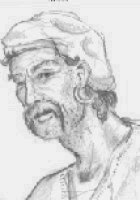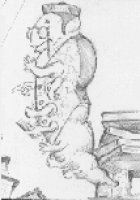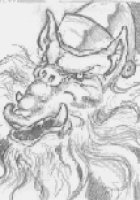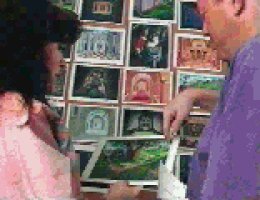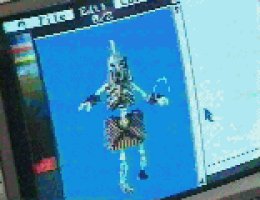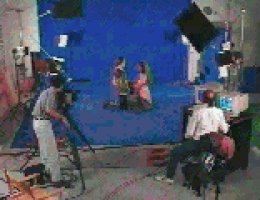King’s Quest VI:
Heir Today, Gone Tomorrow
Development history
After finishing
King's Quest V: Absence Makes the Heart Go Yonder, Roberta spent
about a year trying to evaluate the pros and cons of the new icon interface
introduced in that game. Her goal was to find out how to preserve the ease
of play that the fans of this new interface liked and still be able to
make icon-based games challenging enough for the fans of the old parser
system. At the same time, she felt that she had reached a point where most
of her good ideas had been used in the series already and that it might
be time to hand over the King's Quest series to other people. She also
wanted the freedom to work on other projects. One of these projects was
The Dagger of Amon Ra: A Laura Bow Mystery, the sequel to her best-selling
mystery adventure Colonel's Bequest, a Laura Bow Mystery. For this
sequel she worked on the basic plot and characters at an early stage, making
sure the game was in the spirit of its predecessor, and then left the bulk
of the game design for Bruce Balfour. She was credited as the Creative
Consultant on this game. Roberta also started sketching on a project she
called "Scary Tales", an idea that resulted in Phantasmagoria a
couple of years later. But the King's Quest series proved harder to let
go of than Roberta thought. She finally decided to make another sequel,
but shared the writing, design and directing tasks with Jane Jensen
and William D. Skirvin. Work on the game started in June 1991, and
after setting up the basic plot, characters and locations, she worked together
with Jane on all the plot details and puzzles in the game. Later on, Jane
single-handedly took on the task of writing dialogue and narration text.
The result
was a game layout that would give the player a lot more freedom than usual.
With almost half of the gameplay optional, even an inexperience player
could finish the game, while the more experienced one could try to solve
some of the optional, harder puzzles and discover new sub-plots and other
interesting twists in the story. Most importantly, at one point in the
middle of the game it would branch out into two completely different paths,
each one with unique puzzles and locations, making the replay value of
the game great for any player. As producer, director and art director,
William D. Skirvin worked together with Jane and Roberta to create the
look and feel of the game.
The game was developed
in SCI 1, the same system used for King's Quest V, but a number of technical
improvements enabled this game to look even better. These included a scaling
technique, making the characters look smaller when standing far away while
still using the same character graphics improved the illusion of depth
on the screen, and extensive use of motion-captured live actors to base
the game graphics on. This was done by filming live actors dressed up to
look like the characters in the game in front of a blue screen and then
transfer the video data into a program called Movie 256 that converted
it into a computerized animation ready to be digitally edited by artists.
The result was life-like character animations and beautiful, cinematic
cutscenes.
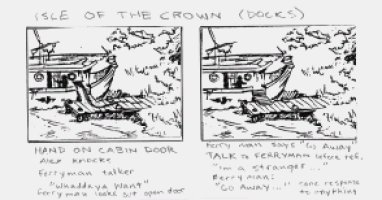 For the introduction
to the game, Sierra wanted a 3D-rendered movie of Hollywood quality, so
they hired Kronos, a company known from their special effects work
on movies like Batman Returns and The Lawnmower Man. The
result was a 1.5 gigabyte movie that was later reduced to a three-minute
eight megabyte introduction movie of incredible quality for its day.
For the introduction
to the game, Sierra wanted a 3D-rendered movie of Hollywood quality, so
they hired Kronos, a company known from their special effects work
on movies like Batman Returns and The Lawnmower Man. The
result was a 1.5 gigabyte movie that was later reduced to a three-minute
eight megabyte introduction movie of incredible quality for its day.
Although targeted
for an initial release on floppy disks, it was decided right from the beginning
that this game would also come out in a multimedia version on CD. Many
critics had complained about the performances of the amateur voice acting
cast in the multimedia version of King's Quest V, so professional voice
actors were hired for all later projects. For the voices to be released
on the multimedia version of King's Quest VI, Sierra went to Hollywood
talent coordinator John Grayson and gave him the task of finding
voice actors for the characters in the game. The result was an impressive
cast, including Robby Benson, voice of the Beast in Disney's animated
blockbuster Beauty and the Beast, as Prince Alexander. The theme
song Girl in the Tower was also recorded by Sierra composer Mark
Seibert in full digital audio, to be played during the ending credits
of the game.
Composer Chris
Braymen created an exciting soundtrack for the game and the hard work
of a talented team of programmers, artists and quality assurance people
resulted in a finished product after well over a year of work.
In October 1992,
the floppy version of King's Quest VI: Heir Today, Gone Tomorrow
was released. It was shipped on eleven 3.5'' disks and was an instant sales
hit. Eleven disks was a lot to handle, but this version still didn't have
character voices and only a few seconds of the digitally recorded ending
theme due to space limitations. It was first with the multimedia CD version,
released in 1993, that the game's great features were really put to justice.
The multimedia version, apart from being conveniently shipped on a single
CD, featured voice acting, a greatly improved introduction movie, now about
seven minutes long and 50 megabytes big, and the full Girl in the Tower
song as a regular CD audio track that was played at the end of the game.
In order to enhance the look of the character face close-ups, Sierra purchased
Seattle-based company Bright Star Technologies, developers of a
lip-synching technology used in their popular education product Alphabet
Blocks. Their technology greatly enhanced the realism of the graphics.
A Windows version of the game was also shipped on the CD, and it featured
redrawn high-resolution graphics of all the character face close-ups, the
inventory objects and the menus.
The Macintosh
version of King's Quest VI: Heir Today, Gone Tomorrow won the Best
Adventure Game Award at Mac World 1993 and was listed in the
Mac World Game Hall of Fame.
Back
to King’s Quest VI: Heir Today, Gone Tomorrow - Main page
Back
to The King's Quest games - Main page
Back
to The King's Quest Chronicles - Main page
